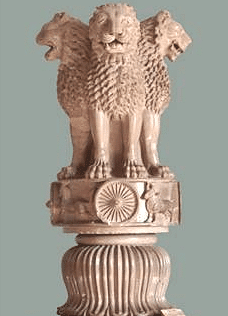Class 6 History Chapter 7 Notes - From a Kingdom to an Empire
Ashoka, a Unique Ruler: Ashoka was the first ruler in the history of the world, who gave directions to the people through inscriptions. Most of Ashoka’s inscriptions were in Prakrit and were written in Brahmi script.
Ashoka’s views on Kalinga: Ashoka tried to conquer Kalinga. However, the violence and bloodshed led him. to decide not to fight any more wars.
Ashoka’s Dhamma: These were the set of instructions given by Ashoka to his subjects, which were inspired by Buddha’s teachings. He appointed officials and Dhamma Mahamatta, who taught people about ‘dhamma’, which was one of the ways to make the society a better one.
The Capital City: We come to know about the capital through Megasthenes, who was an ambassador sent to the court of Chandragupta by the Greek ruler of West Asia, Seleucus Nicator.
Ashoka’s Messages to his Subjects: Ashoka got his messages inscribed on rocks and pillars. He also sent messengers to spread the Dhamma to other lands such as Syria, Egypt, Greece and Sri Lanka.
The First Empire: Chandragupta Maurya founded the Mauryan Empire about 2300 years ago. He was supported by Chanakya or Kautilya whose ideas were written down in a book called Arthashastra.
- Chandragupta Maurya founded an empire more than 2300 years ago. His grandson Ashoka ruled the empire later.
- Chandragupta was supported by a wise man called Chanakya or Kautilya who wrote a book Arthashastra.
- The Mauryan empire had several important cities like the capital Pataliputra, Taxila, Ujjain, etc.
- The area adjacent to the capital was under the direct control of the emperor. Officials were used to collecting taxes. There were other areas or provinces which had their own provincial capitals. According to Arthashastra, the northwest was important for blankets, and south India for gold and precious stones.
- The most famous of the Mauryan emperors was Ashoka. He sent his message to the general public through inscriptions written in Prakrit (in Brahmi script).
- Ashoka fought a war in the quest to conquer Kalinga (present-day Orissa). But the violence and bloodshed in the war touched him and he became the only king who gave up conquest forever after winning a war.
- Ashoka believed he had a responsibility to instruct his subjects, which he did through his ‘DHAMMA’. He was a Buddhist. He appointed officials called as ‘DHAMMA MAHAMATTA’ who went to places teaching people about ‘DHAMMA’. He got his messages inscribed on rocks and pillars as well.
Ashoka built roads, dug wells, and built rest-houses. He arranged for the treatment of unwell humans and animals.

Brahmi: It was a script used to write inscription in Ashoka’s time.
Dhamma: Ashoka’s ideas which he wanted to use to instruct his subjects were calledthe ‘dhamma’.
Dhamma Mahamatta: The officials Ashoka sent from place to place to teach the people his ‘dhamma’ were called ‘dhamma mahamatta’.
The Arthashastra: Chanakya’s book ‘Arthashastra’ contains his ideas. The word means ‘economics’.
Around 2300 years ago (about 300 B.C.): Chandragupta Maurya founded the Maurya empire.
273 B.C.: Ashoka’s region began.
232 B.C.: Ashoka’s death.
185 B.C.: the end of the Mauryan empire.
|
297 videos|1065 docs|204 tests
|





















